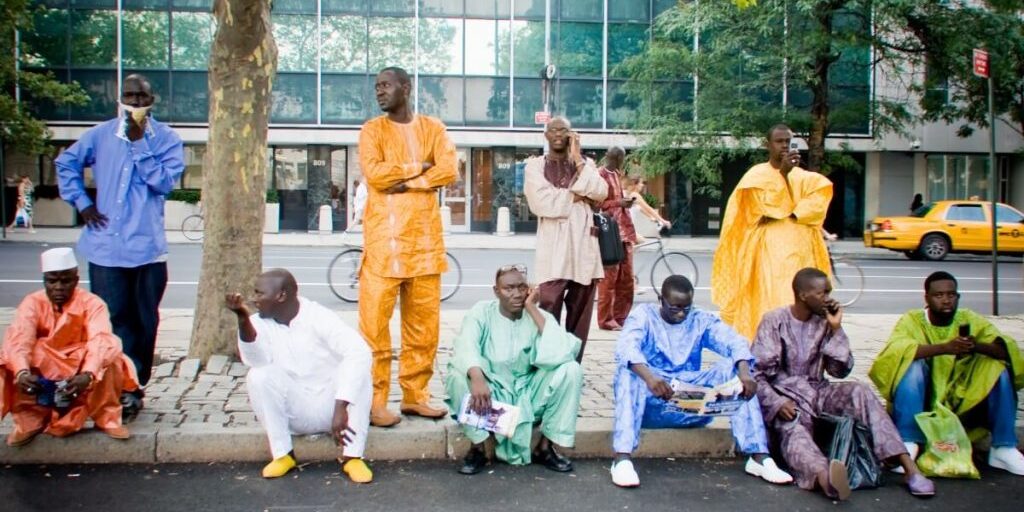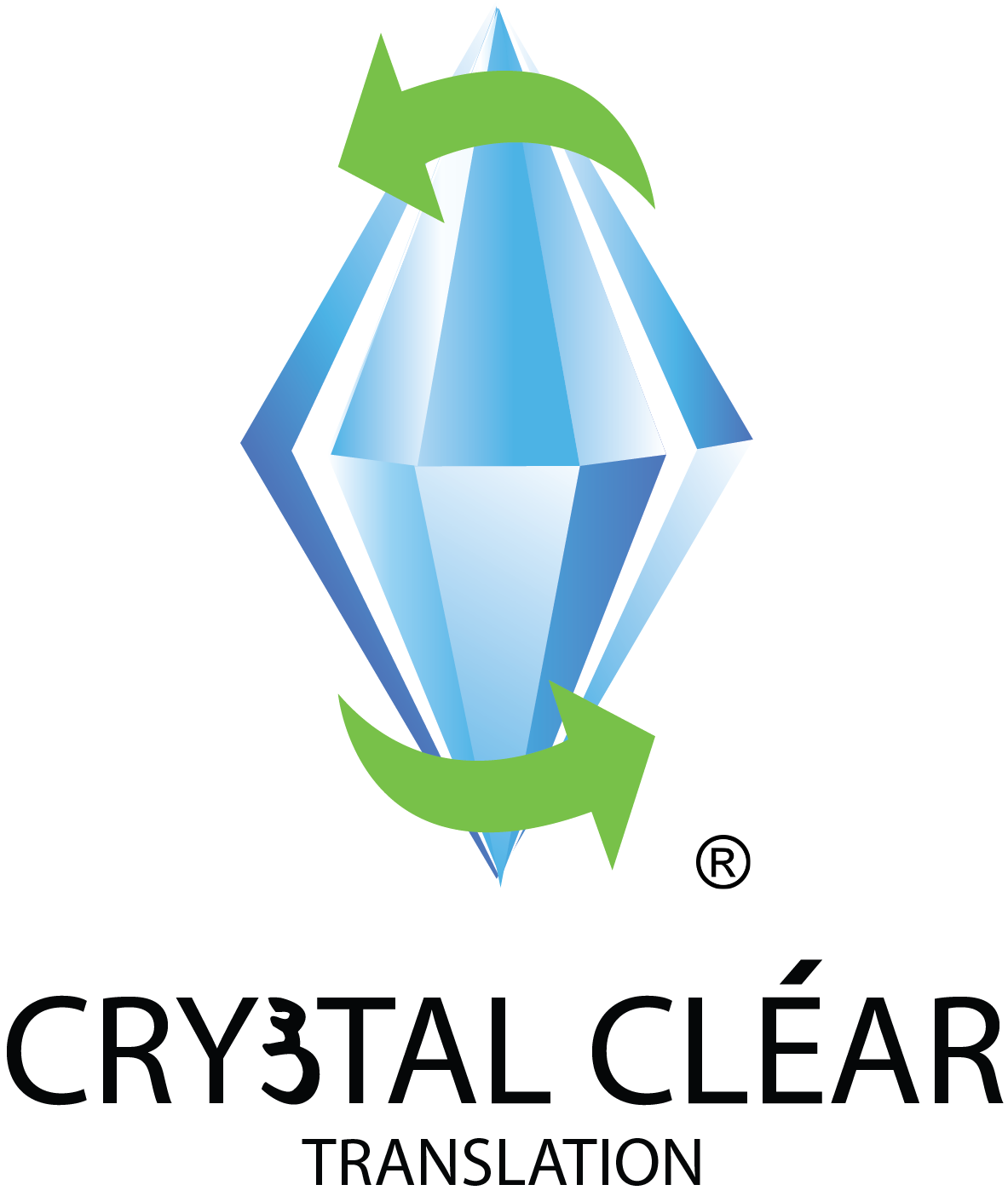
by Hammed Sonny | May 14, 2024 | Uncategorised
Gujarati is an incredibly fascinating language. Part of the Indo-Aryan language family, it harbours close connections to Punjabi and Hindi. Gujarati is spoken by as many as 45.7 million people in India alone, making it one of the most spoken first languages of the region. When we factor in speakers from other countries, Gujarati speakers account for 46.6 million of the population.
Similar to other Indo-Aryan dialects, Gujarati derives from Sanskrit and Prakrit, two ancient languages spoken in India up until 13th century AD.
Where is Gujarati spoken besides India?
Gujarati is richly spoken in many places outside of India. These regions include Bangladesh, Fiji, Kenya, Malawi, Pakistan, South Afria, United Kingdom and USA, to name a few.
Status
Guajarati is one of 22 languages with official status in India. Particularly within the state of Gujarat, the majority of people communicate daily in the language. It is a widely celebrated and spoken language throughout Indian communities all across the world. Many migrants from India who have relocated still use it solely as their first language. In fact, it is one of the most spoken foreign languages in London and Birmingham.
Dialects
There are several varying dialects spoken within the Gujarati language web. Most of these are based on location and will change based on the region you are in. These include:
- East African Gujarati
- Standard Gujarati (including the varieties spoken in Mumbai and Ahmedabad, the capital of Gujarat)
- Surati
- Kathiyawadi
- Kharwa
- Khakari
- Tarimukhi
Many dialects borrow loanwords from Portuguese, Persian and Arabic.
Final thoughts
Gujarati is a highly popular language in many other countries other than India. The development of the language since its early days is extremely fascinating. The language remains rife all across the world within Indian and Gujarat communities. The growing number of migrants may call for interpreters and translators in various different scenarios.
Should you require a Gujarati interpreter or translator, visit Crystal Clear Translation for a quote.

by Hammed Sonny | May 7, 2024 | Africa
The Wolof language is a diverse tongue. Being part of the Niger-Congo language family, Wolof is spoken by the west African ethic group of Wolof people. Mainly prevalent within Senegal, Gambia and Mauritania, Wolof can differ between location, making it an extremely versatile dialect.
The History of Wolof
Although we cannot be sure of its specific origin, it is widely believed that Wolof derived from the Jolof empire around the 14th century. Later, by the 20th century, the language had spread rapidly with thanks to urbanisation, inter-ethnic marriages and socioeconomic developments.
There are two main dialects in Wolof, distinguished by their geographical location. One of those being spoken in Senegal and the other in Gambia.
Wolof in Senegal
Within Senegal, there are approximately 5.2 million Wolof speakers. The Wolof people are the largest ethnic group within the west African country and account for 7 million of the entire collective of people. Despite the official language in Senegal being French, Wolof is vastly spoken, whilst French is only really used by those who have attended French speaking schools. As more and more environmental developments surface, Wolof is increasing at a rapid rate, particularly in urban areas.
Wolof in Gambia
The number of native Wolof speakers is markedly less than that of Senegal, with only around 250,000 throughout the region. Wolof people can be found living in areas such as Baddibu, Jokadu, Saloum and Niumi. The remaining population of Gambia will typically speak Gambian as their mother tongue.
Wolof in Mauritania
A sovereign state in west Africa, Mauritania is home to approximately 4.4 million people. Out of the entire population only around 230,000 are speakers of the Wolof language, whilst most people will speak French or Arabic, the two national languages of the state.
How does Wolof differ by region?
Within Senegal there are 5 specific Wolof Dialects which include Baol, Cayor, Dylof, Lebou and Jander. These dialects typically differ between rural and urban areas. The larger, built-up areas of Senegal the dialect is markedly influenced by the French language, with a substantial of French loanwords present to this day. Gambian Wolof is too influenced by other languages, but in juxtaposition to Senegalese, Gambian Wolof has become influenced by English. Another notable difference is the numbers of speakers throughout various locations, as we touched on earlier, Senegal is home to the bulk of Wolof people and speakers. It is interesting to discover that even though all part of the same ethic group, there are significant distinguishing differences which categorise what is Gambian Wolof and What is Senegalese Wolof.
Concluding Thoughts
If we look at everything we have discovered about this fascinating language, we can draw a conclusion which states to us that dependent on the region you are present in you will be subject to a unique style of Wolof. It is also wise to note that the language has evolved through centuries, being significantly developed along the way by many environmental and social factors.
Do you require our services?
If you feel that you could benefit from one of our translation or interpretation services, visit Crystal Clear Translation for a quote.

by Hammed Sonny | Apr 29, 2024 | Languages, London
Written by Shannon Walker.
According to 2018 statistics, there are over 170,000 combined refugees and asylum seekers living within the united Kingdom. An individual may seek refuge or asylum from their own country when they find themselves and their families in some type of grave danger. Other countries may offer refuge to these people on a temporary or permanent basis, in the hope of minimalizing danger to life. Whilst the UK does its part to support migrants, refugees and asylum seekers only make up 0.26% of the UK population- this is minimal compared to countries like Turkey and Lebanon who are renowned for their work helping those seeking safety.
For those that find themselves seeking refuge and asylum in the UK, coming to a foreign country in haste may mean difficulties can arise. The most common challenge facing refugees and asylum seekers is that of language barriers; many if all migrants that enter the UK speak little to no English. There are a few essential instances where these languages barriers need to be tackled. Essential scenarios such as:
- Medical appointments or other healthcare settings
- Legal matters such as meetings with solicitors
- Basic communication with refugee helpers
- Permanent citizens looking for employment
- Children entering schools
The most common way to manage these language barriers would be through the use of professional linguistic services.
Professional language interpreting
Most refugees and asylum seekers are likely to have no English-speaking friends or family to offer translation and interpretation support, so the next best option is to appoint professionals. There are two common types of interpretation that take place with refugees and asylum seekers; telephone and face-to-face interpreting- however, face-to-face is widely preferred in professional settings, but due to covid-19 restrictions telephone has been the norm. Nonetheless, both are highly effective in supporting those who are not intelligible with English.
When selecting an interpreter, there may be a few matters to consider before appointing somebody. Due to the sensitive nature of issues surrounding the individuals, it can be crucial to ensure the following needs are considered and met:
- Consider one’s preference on gender or religious/ political background of the professional (whilst this may not be as vital in usual circumstances, it seems wise to understand why somebody seeking refuge may have these preferences)
- Inform the individual of why you will be using an interpreter
- Ensure the interpreter is trained to work in a sensitive environment
Once selected, the interpreter will be able to offer support accordingly by translating any speech or documents into an individual’s target language. This offers the person the best opportunity to gain inclusive and non-judgemental support when needed.
Final thoughts
It is vital that we assist refugees and asylum seekers in overcoming language barriers, this offers them the best opportunity to make the most of their time residing within the UK.
Should you require a professional interpreter or translator, visit Crystal Clear Translation for a quote.

by Hammed Sonny | Apr 23, 2024 | Africa
In Eritrea, there is no official language, but there are a total of nine languages recognised in the country, with Tigrinya, Arabic and Tigre being the most prominent dialects in the region. The working languages of Eritrea comprise of Italian, Tigrinya, English, and Arabic. In addition to this, around 80% of Eritrean people are ethnic Tigrinya and Tigre. Considering the varied number of languages spoken, many people are bilingual or multilingual in Eritrea.
Tigrinya
Tigrinya is a Semitic language; it is from the same language family as Tigre, Amharic, Hebrew, Arabic and Maltese. It is spoken by 7 million people around the world and is most widely spoken in Eritrea and northern Ethiopia. It is also an official language in Ethiopia. The first written example of Tigrinya was from the 13th century – a text of local laws found in southern Eritrea. The Tigrinya alphabet consists of 32 letters and is written in the Ge’ez script. Tigrinya derives from the ancient Ge’ez language, now considered to be a defunct language. Unlike other languages in the Semitic language family, like Arabic or Hebrew, Tigrinya is written from left-to-right, in the same way as Latin and the English language.
Words in the Tigrinya language are affected by the gender of the person being spoken to. Nouns in the language are either masculine or feminine, but inanimate objects do not have a fixed gender. The masculine endings for nouns in Tigrinya are “-a” and “-u”, and the feminine ending is “-i”. Therefore, the phrase “how are you?” in both forms is “kemey aleka” (masculine ending) and “kemey aleki” (feminine ending). Another example is the Tigrinya translation of the phrase “what is your name? – this becomes “men eyu shmu?” (Masculine ending) and “men eyu shma?” (feminine ending). Here are some examples of the present tense form as well as personal pronouns in the Tigrinya language.
Personal pronouns:
I (singular) – “ana”, (plural) – “nihna”
You (fem. singular) – “nisxi” (plural) “nixsin”
You (masc. singular)– “nixsa”, (plural) ”nixsum”
She/they (singular) – “nisa”, (plural) “nisom”
He/They (singular) – “nisu”, (plural) “nisan”
Present tense form of the verb – “to be”
I am (singular) – “iye”
You are (masc. singular) – “ikxa”
You are (fem. singular) – “ikxi”
You are (masc. plural) –“ikxum”
You are (fem. plural) – “ikxn”
He is – “iyu”
She is – “iya”
We are – “ina”
They are (masc. plural) – “iyom”
They are (fem. plural) – “iyen”
Despite sharing similarities with Tigre such as the use of Ge’ez script, the two languages differ in the extent of influence by other languages. The Tigrinya language has adopted some vocabulary from both the Italian and English languages. For example, the words pasta, machina (machine) and armadio (wardrobe) feature in Tigrinya and are pronounced in the same way in Tigrinya as they are in Italian. The English words computer, telephone and radio, in Tigrinya are written and pronounced as “computer, telefon, posta”. The development of the Tigrinya language has also been influenced by the Arabic language. Arabic loanwords in the Tigrinya language use the Arabic feminine word ending, “-a”. Nouns that do not derive from the Arabic language end using the Tigrinya feminine ending “-ät”:
Arabic loanwords
“qawa” – coffee
“sadarya” – vest.
Tirgrinya feminine ending
“aynät” – kind
‘amamat” – head-cover
Tigre
The Tigre language, like Tigrinya, is a member of the Semitic language family. It is spoken mostly in Eritrea, notably in Keren, the second largest city in Eritrea. Unlike Tigrinya, it is spoken by a smaller proportion of people; it is estimated that there are between 250,000 and 1,050,000 Tigre speakers. Both Tigrinya and Tigre derive from the Ge’ez language, and both use the Ge’ez script. Tigre, like Tigrinya, is also an SOV (subject-object-verb) language. However, Tigre speakers who practise Islam write using the Arabic script whereas Christian Tigre people write mainly using the Ge’ez script, after the publication of a translation of the New Testament was written using the script in 1902. There are a variety of different dialects (Mansa, Habab, Barka, Semhar, Algeden, Senhit and Dahalik) within the Tigre language, but most of the dialects share the same vowels (/i/, /e/, /a/, /ā/, /o/, /u/), verbs, pronouns, and use the same gender rules, much in the same way as the Tigrinya language. However, Tigre differs greatly from Tigrinya in some of the basic charactersitics of the language, such as personal pronouns and the formation of the verb, “to be”, which is essential in any language.
For example, these are personal pronouns in the Tigre language:
I (singular) – “ana”, (plural) – “hna”
You (fem. singular) – “enti” (plural) “entn”
You (masc. singular)– “enta”, (plural) ”entum”
She/they (singular) – “hta”, (plural) “hten”
He/They (singular) – “htu”, (plural) “htom”
The verb ‘to be’ in Tigre in the present tense form:
I am – “ana … haleko”
You are (masc. singular) – “enta … haleka”
You are (fem. singular) – “enti … haleki”
You are (masc. plural) – “entum … halekum “
You are (fem. plural) – “entn … halekn”
She is – hta … halet”
He is – “htu … hala”
We are – “nHna … halena”
They are (masc. plural) – “htom … halew”
They are (fem. plural) – “hten … haleya”
In Conclusion
One might suggest that since Tigre and Tigrinya share the same script, that they must be very similar languages. Nevertheless, the variations between the basic building blocks of both languages, such as the examples of personal pronouns and the formation of the present tense, highlight that there are significant differences between Tigre and Tigrinya to account for especially if one is trying to learn either language or looking for someone to translate the Tigrinya or Tigre languages.
If you require any services in Tigre or Tigrinya, at Crystal Clear Translation, we offer document translation, interpretation, and various language services in both languages. Click here to get a quote from Crystal Clear Translation and find out more about the services we offer.

by Hammed Sonny | Sep 26, 2023 | Africa
Deriving from the Niger-Congo family, the Lingala is a Bantu language spoken throughout Democratic Republic and Republic of Congo. As well as these regions, it is known to be spoken in Angola and Southern South Sudan.
Lingala is one of the four main languages spoken within the Democratic Republic of Congo, but where did it come from? We are looking at the history of this dynamic language, and how it is used to this day around Africa.
Lingala: Origins and History
It is believed that Lingala originated from the Congo trade language, Bobangi (Bangi). With the Belgian colonisation in the 19th century, a language was needed to aid administrative and missionary communication, this is where Bobangi came into use, and it soon spread wide across the region. From then on, over the years Bangi became Bangala and efforts to refine and standardise the dialect resulted in the introduction of Lingala in 1903. The language has grown increasingly popular since its breakthrough, it is used widely as the lingua Franca of the armed forces and has also greatly influenced music.
Lingala Dialects
There are two main Lingala dialects; Standard and Spoken.
Standard Lingala:
The standard variation is typically used within a formal context such as educational facilities, religious buildings and even the media in print. Standard Lingala is taught at all levels throughout education. It is thought that this particular variation has been closely associated with catholic missionaries who even aided the standardisation of the language.
Spoken Lingala:
The more informal of the two dialects, Spoken Lingala is utilised in a more casual context. It differs from standard in the sense that it uses a mono graphical noun prefix system. In addition, another distinguishing difference is the dialect can differ between what is spoken in Kinshasa and what is spoken in Brazzaville- both variations borrow words from French and other Bantu languages.
How many people speak Lingala?
Lingala is estimated to be spoken by around 10 million people throughout all the regions it is prevalent in. Within Congo, approximately 2 million people speak the language as a first tongue, this is markedly less than the 5 million who speak it as a second language- this is since it is predominantly a trade language which has evolved mainly for the purpose of business. It is important to note that most speakers of Lingala are situated within the north-western states of the Democratic Republic of Congo.
Closing thoughts
With everything we have discussed in mind, it is apparent that Lingala is an extremely functional language which has aided the trading business over the years. Since its refinement in the early 1900’s it has become widely utilised in many purposes including the media and schools. As Lingala continues to be taught, it is an interesting thought to think about who and where this dialect may have influence next.
Do you require our services?
If you require our services in interpretation and translation, visit Crystal Clear Translation for a quote.






